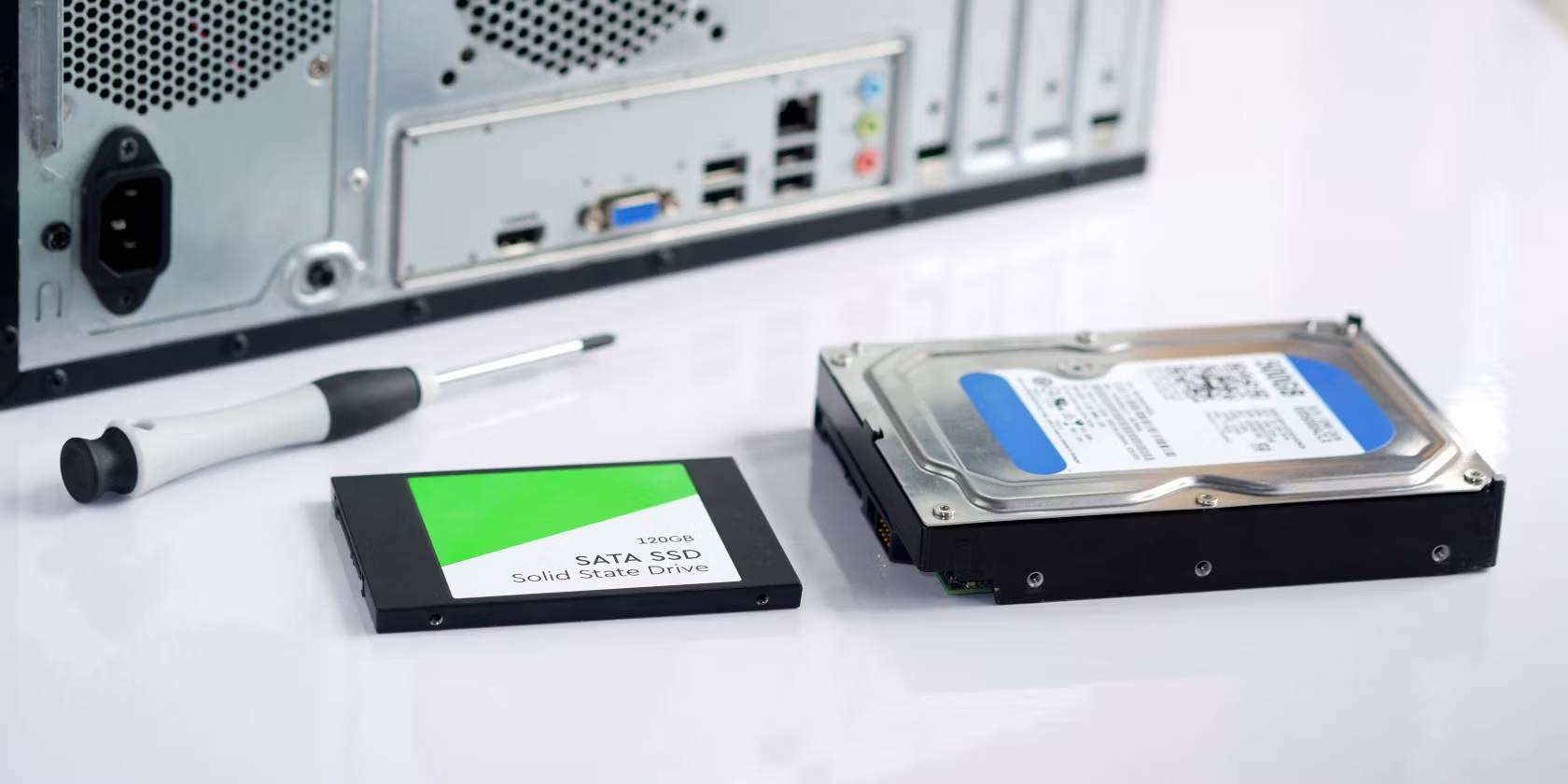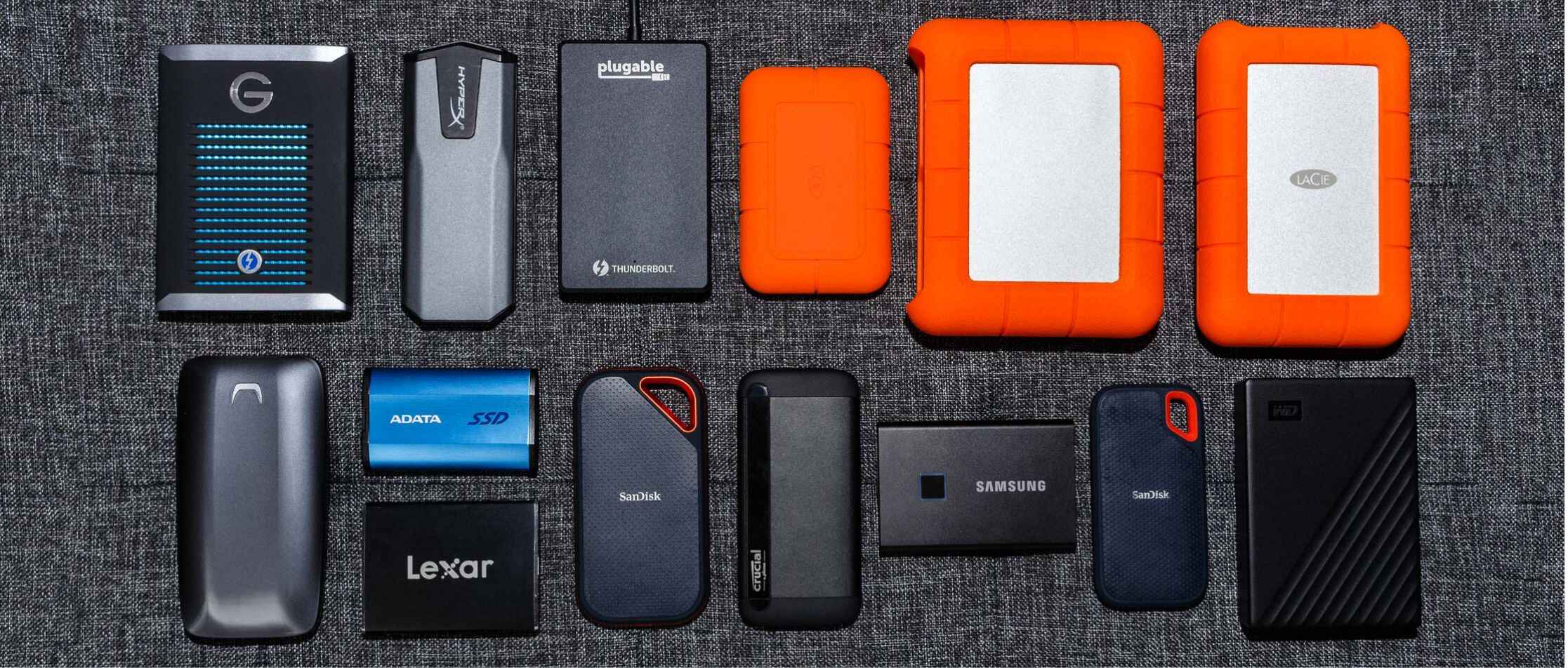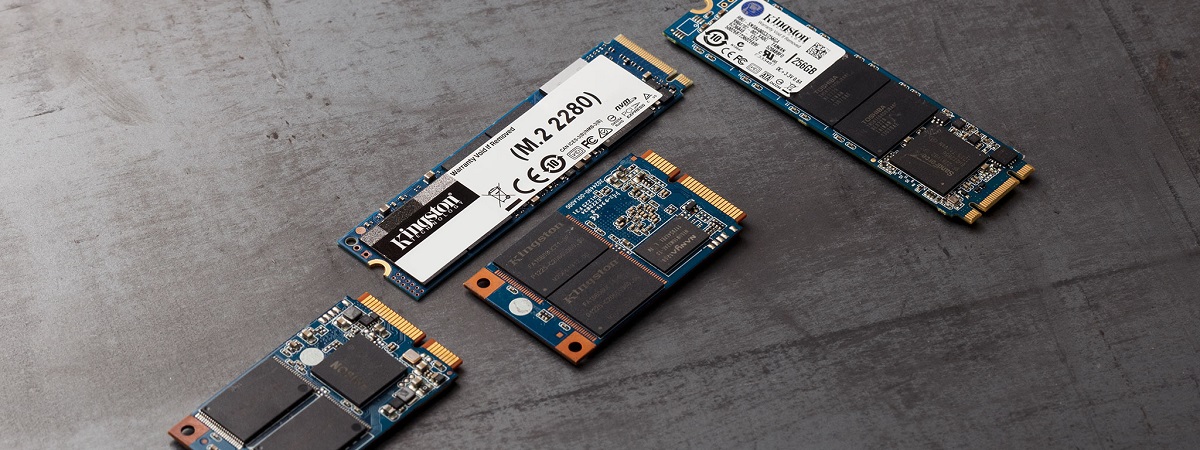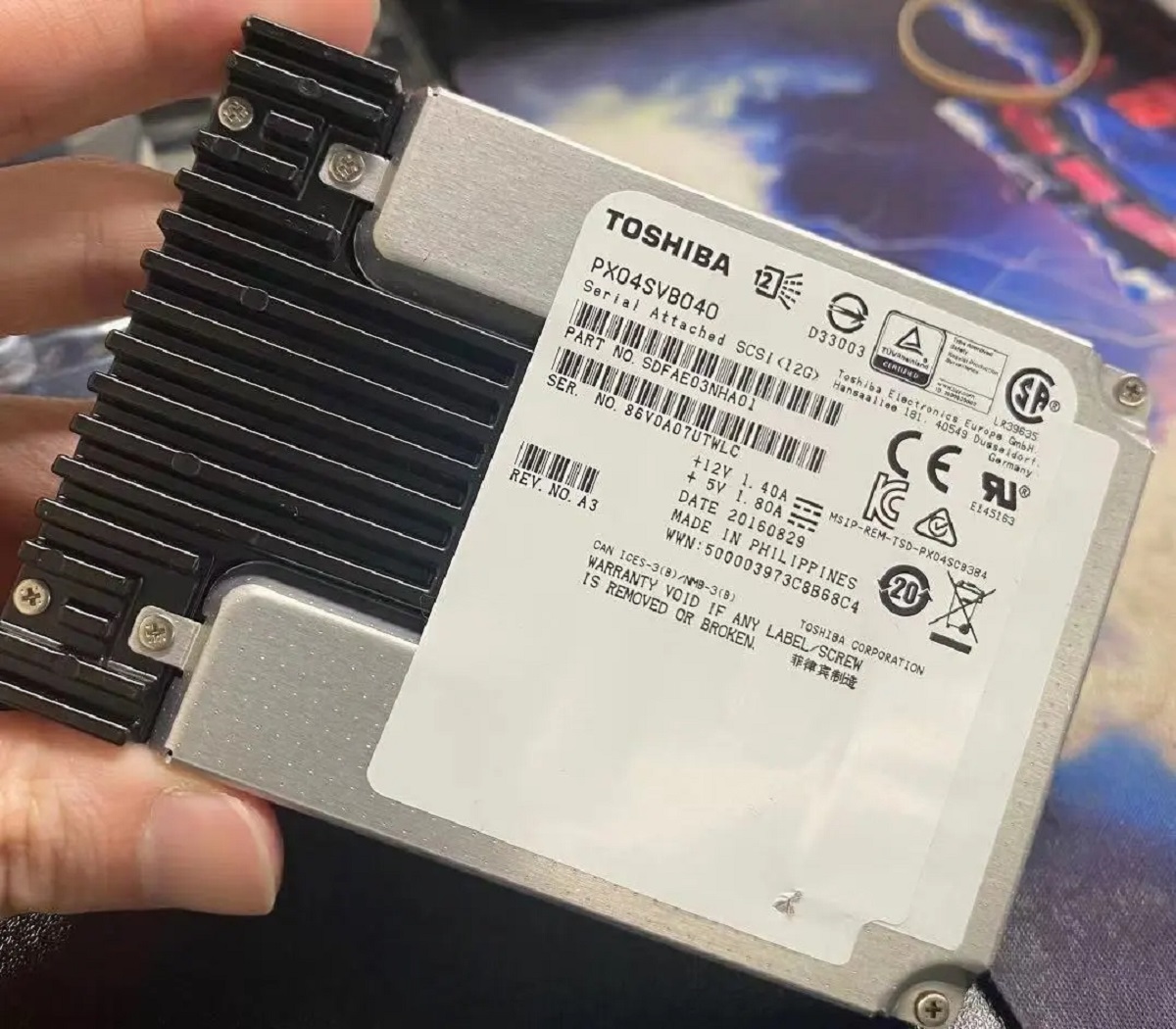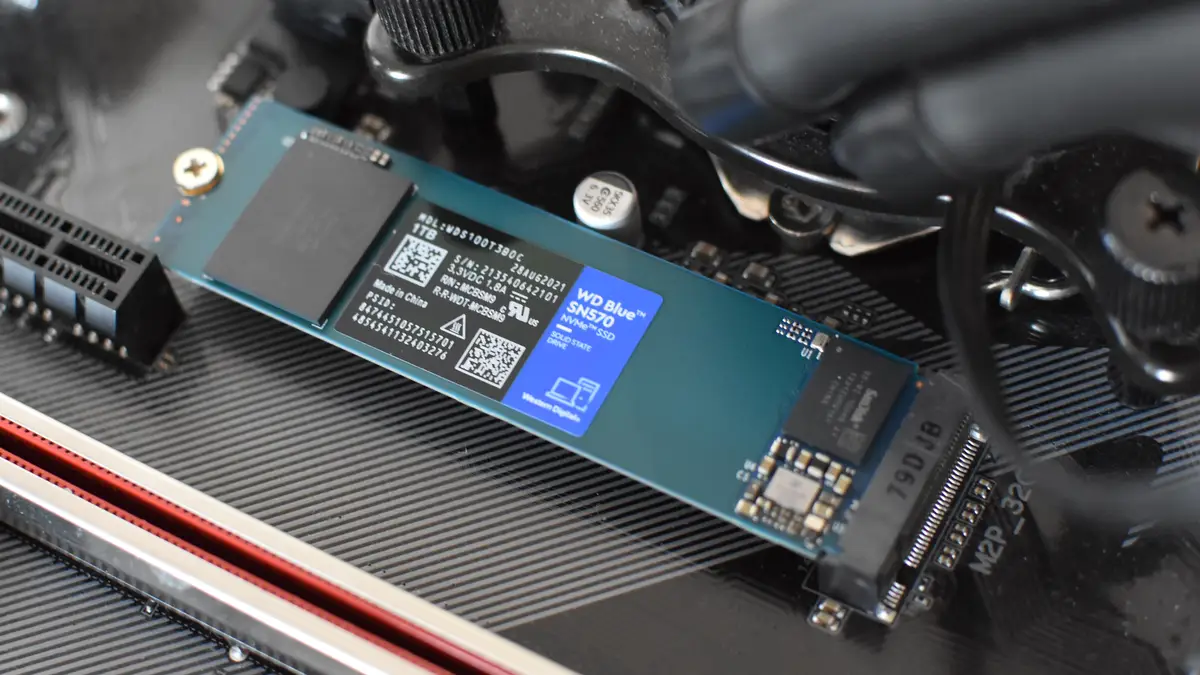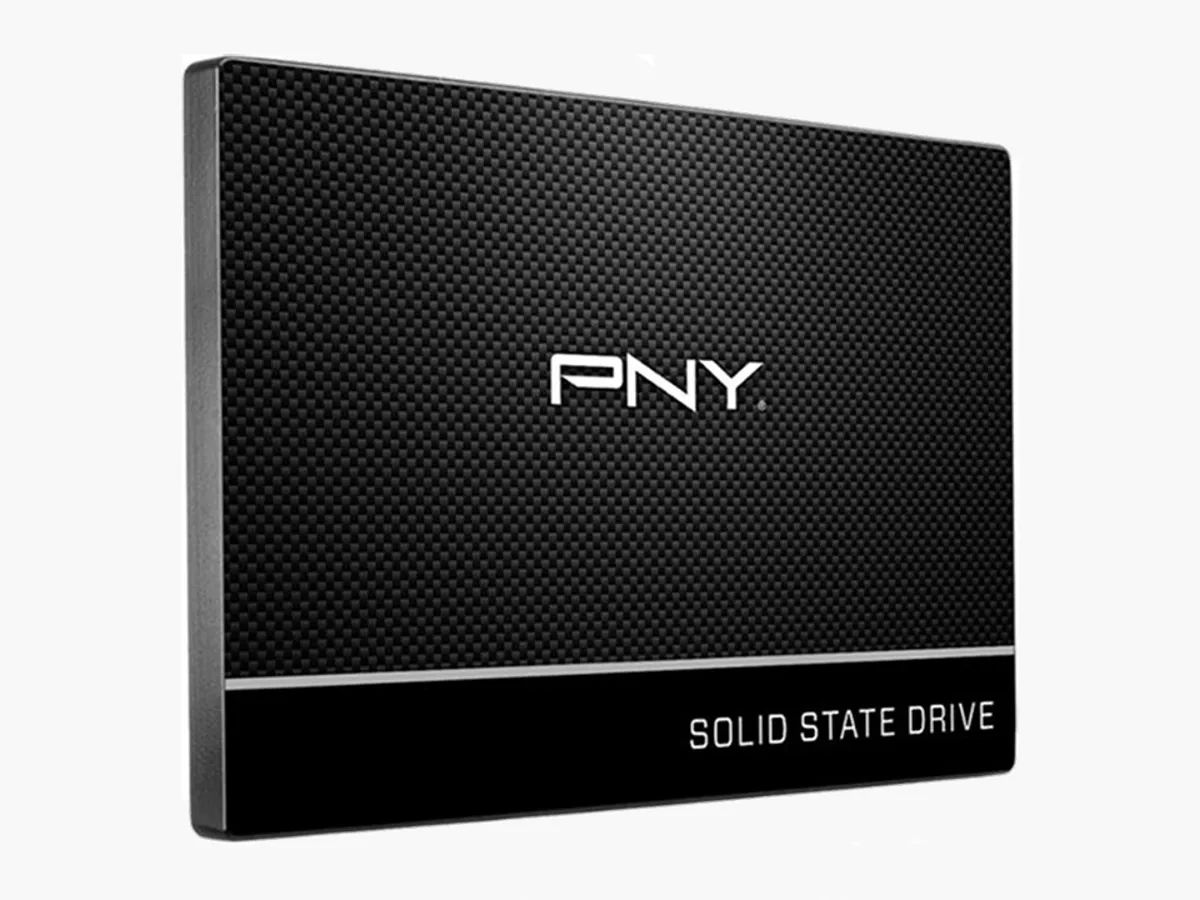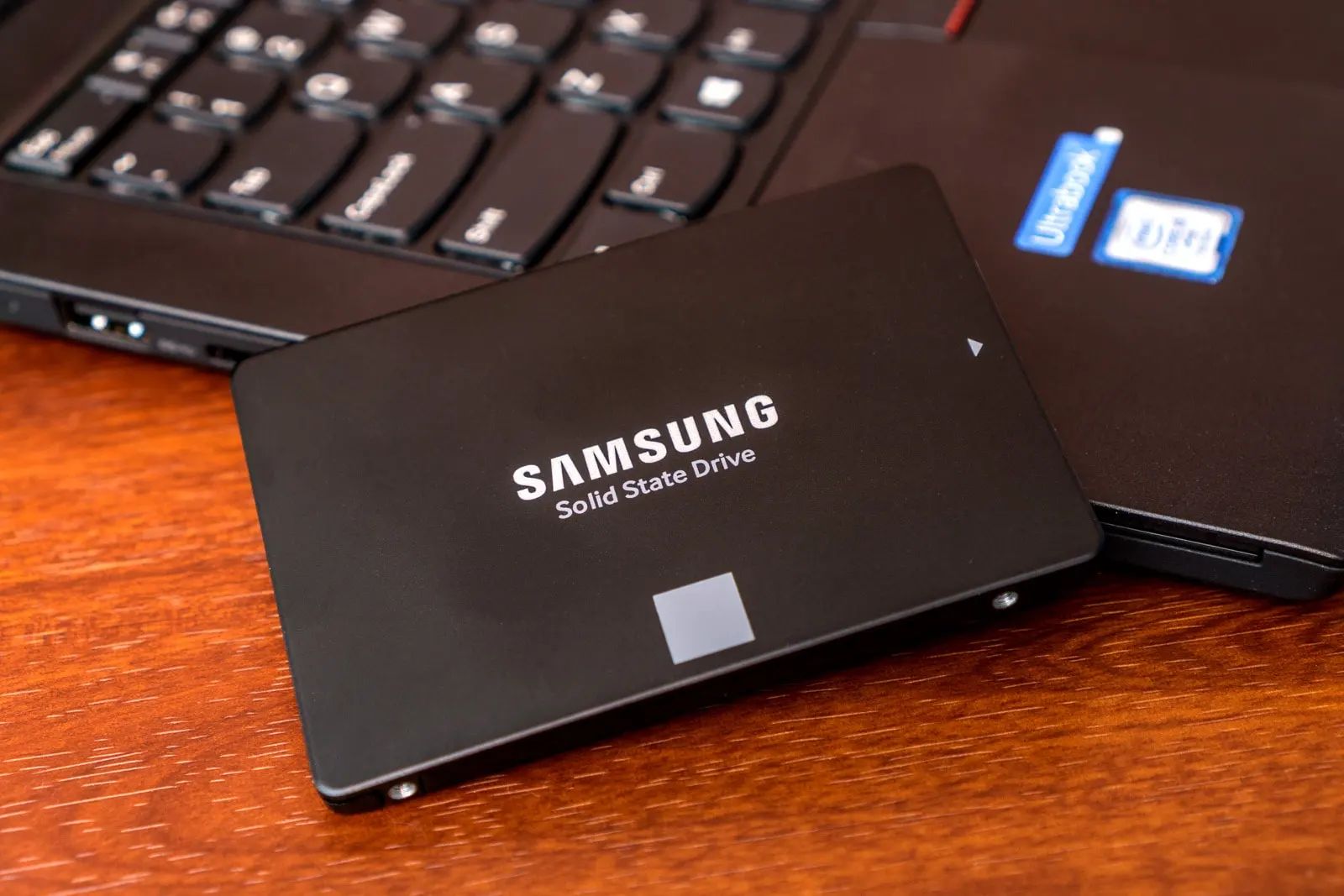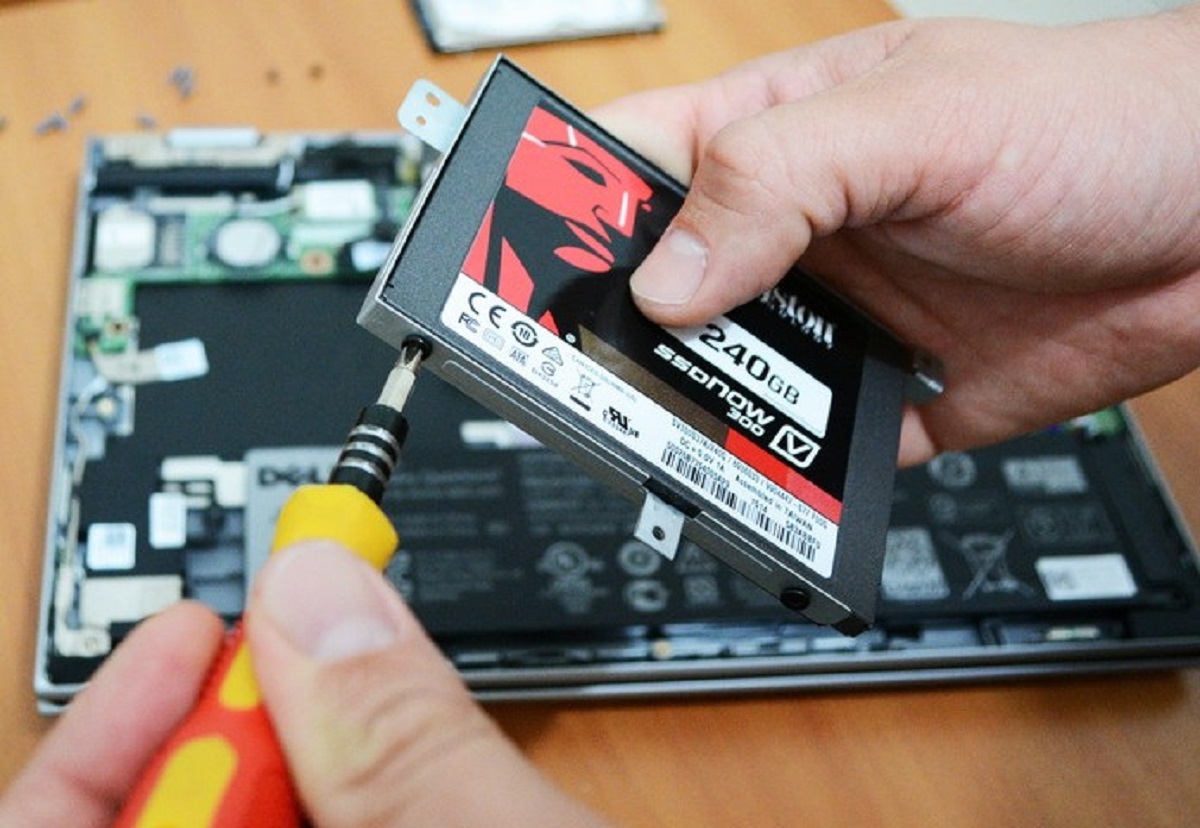Introduction
Welcome to the fascinating world of Solid State Drives (SSDs). In this digital age, storage technology plays a crucial role in our daily lives, whether it’s for personal use, businesses, or even data centers. With the growing demand for faster and more reliable storage solutions, SSDs have emerged as the preferred choice for many users.
But have you ever wondered how long an SSD actually lasts? Can it withstand years of intensive use? In this article, we will delve into the factors that affect the lifespan of an SSD and provide you with valuable insights.
SSDs, in contrast to the traditional hard disk drives (HDDs), are non-volatile storage devices that use integrated circuit assemblies to store data persistently. They do not have any moving mechanical parts, which not only makes them faster but also more durable and shock-resistant.
Understanding how SSDs work is essential to comprehend their lifespan. The primary component of an SSD is NAND flash memory, which is responsible for storing data. This memory is composed of billions of cells that can be programmed with an electrical charge to represent either a 1 or a 0, thereby storing digital information.
Several factors play a crucial role in determining how long an SSD lasts. One of the most critical factors is write endurance. Each NAND flash memory cell can only endure a certain number of write operations before it starts to degrade. This degradation can lead to reduced performance and potential data loss. Hence, it’s essential to assess the write endurance of an SSD before making a purchase decision.
Furthermore, the type of NAND flash memory used in an SSD also affects its lifespan. There are different types of NAND flash memory, such as SLC (Single-Level Cell), MLC (Multi-Level Cell), TLC (Triple-Level Cell), and QLC (Quad-Level Cell). Each type has a varying number of voltage levels, which determines the amount of data that can be stored in each memory cell. Generally, SLC flash memory has the highest endurance, followed by MLC, TLC, and QLC.
Another critical aspect that affects the lifespan of an SSD is the presence of TRIM and garbage collection mechanisms. These features help in maintaining optimal performance by freeing up blocks of NAND flash memory that are no longer in use. By efficiently managing the storage allocation, TRIM and garbage collection extend the lifespan of an SSD.
Over-provisioning is another factor to consider. SSDs typically have some unused storage space reserved for background tasks, such as wear leveling and bad block management. This over-provisioned space helps in maintaining the performance and lifespan of the SSD by spreading out the write operations across a larger pool of memory cells.
Power fail protection is a feature available in some advanced SSDs that safeguards against data loss in the event of a sudden power loss. This protection ensures that all data being written to the SSD is safely stored, preventing any potential corruption or loss.
Additionally, SSDs often have SMART (Self-Monitoring, Analysis, and Reporting Technology) monitoring capabilities. SMART data provides valuable insights into the health and performance of the SSD, allowing users to monitor and proactively address any potential issues.
Now that we have covered the key factors affecting SSD lifespan, in the following sections, we will delve deeper into each one. Understanding these factors will help you make informed decisions when choosing an SSD and taking the necessary steps to maximize its lifespan.
What is SSD?
A Solid State Drive (SSD) is a type of storage device that utilizes flash memory technology to store and retrieve data. Unlike traditional Hard Disk Drives (HDDs), which use mechanical components like spinning disks and read/write heads, SSDs rely on electronic circuits to perform data storage functions. This fundamental difference in technology gives SSDs several advantages over HDDs.
SSDs are designed to provide faster and more efficient data access compared to HDDs. The absence of moving parts eliminates the need for mechanical processes, such as spinning and seeking, resulting in significantly reduced data latency. As a result, SSDs are capable of delivering faster boot times, faster file transfers, and overall improved system responsiveness.
In addition to their speed, SSDs are also known for their reliability and durability. Without any moving mechanical parts, SSDs are less prone to physical damages caused by drops, shocks, or vibrations. This makes SSDs an ideal choice for portable devices like laptops and mobile devices, where durability is crucial. Furthermore, SSDs can operate in a wider range of temperatures, making them suitable for various environments.
Another advantage of SSDs is their energy efficiency. As SSDs don’t rely on spinning disks or read/write heads, they consume significantly less power than HDDs. This can lead to improved battery life for laptops and reduced energy costs for data centers and server farms.
SSDs come in various form factors, including 2.5-inch drives for desktop and laptop computers, M.2 drives for ultrabooks and compact devices, and PCIe cards for high-performance applications. They are available in different storage capacities, ranging from a few hundred gigabytes to several terabytes.
Overall, SSDs have revolutionized the storage industry by providing faster performance, increased durability, and improved energy efficiency. They have become the go-to option for users who require quick access to their data and need a reliable storage solution. With continuous advancements in technology, SSDs are becoming more affordable, making them accessible to a broader range of users.
How SSDs Work
Understanding how Solid State Drives (SSDs) work is essential to grasp their functioning and the advantages they offer over traditional storage devices. SSDs utilize a combination of integrated circuitry, memory cells, and controller technology to store and retrieve data.
The primary component of an SSD is NAND flash memory, a type of non-volatile memory that retains data even when power is removed. Unlike volatile memory like Random Access Memory (RAM), which loses its data when power is turned off, NAND flash memory allows for persistent storage.
The NAND flash memory in an SSD consists of billions of individual cells, each capable of storing multiple bits of data. These cells are organized into pages, which are further grouped into blocks. The most common type of NAND flash used in SSDs is the Multi-Level Cell (MLC) or Triple-Level Cell (TLC) NAND.
When data is written to an SSD, the controller sends electrical charges to the specific cells that need to be programmed with the desired data. The presence or absence of an electrical charge determines whether the stored bit is interpreted as a 1 or a 0.
One notable characteristic of NAND flash memory is that it has a limited number of write cycles before it begins to degrade. Each memory cell can only endure a specific number of write operations before it becomes less reliable. However, modern SSDs implement various techniques to mitigate this limitation and extend the overall lifespan of the drive.
To ensure efficient data retrieval, SSDs employ a controller chip. This chip manages the data flow between the host system and the NAND flash memory. The controller performs tasks such as data encryption, wear leveling, error correction, and garbage collection.
Wear leveling is a critical function of the SSD controller. It ensures that write operations are distributed evenly across all the memory cells, preventing any single cell from wearing out faster than others. By spreading out the workload, wear leveling helps to extend the overall lifespan of the drive.
Garbage collection is another vital task performed by the SSD controller. When data is deleted or modified, the corresponding memory cells are flagged as invalid. However, these flagged cells are not instantly cleared because it would negatively impact performance. Instead, the garbage collection process consolidates these invalid pages into valid blocks, freeing up capacity for future data writing.
SSDs use advanced error correction algorithms to ensure data integrity. As NAND flash memory cells face natural wear and tear over time, errors may occur in data reading or writing. The error correction algorithms implemented in the SSD controller detect and correct these errors, ensuring that the stored data remains reliable.
In summary, SSDs employ NAND flash memory and a controller chip to store and retrieve data. The controller manages tasks like wear leveling, garbage collection, and error correction to optimize performance and extend the overall lifespan of the drive.
Factors Affecting SSD Lifespan
Several factors contribute to the lifespan of a Solid State Drive (SSD), and understanding these factors can help users maximize the longevity and performance of their SSDs.
One of the most critical factors affecting an SSD’s lifespan is write endurance. Each NAND flash memory cell has a limited number of write cycles before it starts to degrade. The more write cycles a cell undergoes, the more likely it is to encounter errors or failures. SSD manufacturers often specify the endurance of their drives in terabytes written (TBW) or drive writes per day (DWPD), indicating how much data can be written to the drive over its lifetime. It is essential to consider the write endurance rating when selecting an SSD for intensive workloads.
The type of NAND flash memory used in an SSD also affects its lifespan. There are different types of NAND flash memory, including Single-Level Cell (SLC), Multi-Level Cell (MLC), Triple-Level Cell (TLC), and Quad-Level Cell (QLC). SLC memory provides the highest endurance, followed by MLC, TLC, and QLC. The lower endurance of MLC, TLC, and QLC cells is offset by their higher capacity and lower cost. It is crucial to strike a balance between endurance and cost when choosing the right SSD for your needs.
Garbage collection and TRIM are important features that can affect the lifespan of an SSD. When data is deleted or modified, SSDs mark the corresponding memory cells as invalid. However, these cells are not instantly cleared to optimize performance. Instead, garbage collection processes consolidate these invalid pages into valid blocks during idle time. TRIM, supported by operating systems, informs the SSD which data blocks are no longer in use, enabling the drive to perform efficient garbage collection. Proper implementation of garbage collection and TRIM helps maintain performance and extends the lifespan of an SSD.
Over-provisioning is another factor that affects SSD lifespan. SSDs often reserve a portion of their storage capacity for background tasks, such as wear leveling and bad block management. Over-provisioning ensures that there are sufficient spare blocks to distribute write operations evenly, reducing wear on individual memory cells and extending the overall lifespan of the drive.
Power fail protection is a feature available in some advanced SSDs. It protects against data loss and corruption in the event of an unexpected power loss. Power fail protection ensures that any data being written to the SSD at the time of power loss is accurately stored, preventing any potential data inconsistencies or damage.
Monitoring the health and performance of an SSD is crucial for maximizing its lifespan. Most SSDs support SMART (Self-Monitoring, Analysis, and Reporting Technology) monitoring, which provides valuable insights into the drive’s health and performance. Regularly checking the SMART data and taking appropriate action can help identify any potential issues early on and prevent further damage or failure.
By taking into consideration the factors mentioned above and engaging in best practices such as regular backups, avoiding extreme temperature or humidity conditions, and keeping the drive firmware up to date, users can optimize the lifespan and performance of their SSDs.
Write Endurance
Write endurance is a critical factor in determining the lifespan and reliability of a Solid State Drive (SSD). It refers to the ability of the NAND flash memory cells within the SSD to withstand a certain number of write cycles before they become unreliable or fail.
Each time data is written to an SSD, it involves an electrical charge being applied to specific memory cells to store the data. Over time, this process can cause physical stress and wear on the cells, leading to degraded performance and potential data loss.
The write endurance of an SSD is typically specified by the drive manufacturer in terms of terabytes written (TBW) or drive writes per day (DWPD). TBW indicates the total amount of data that can be written to the drive over its lifetime, while DWPD specifies the number of times the entire drive capacity can be written per day without exceeding the endurance rating.
It is essential to consider write endurance when selecting an SSD, especially for workloads that involve frequent and intense write operations, such as database servers or content creation workstations. For such scenarios, SSDs with higher write endurance should be chosen to ensure durability and longevity.
Several factors can affect the write endurance of an SSD. One of the primary factors is the type of NAND flash memory used in the drive. SSDs can be categorized into different types, including Single-Level Cell (SLC), Multi-Level Cell (MLC), Triple-Level Cell (TLC), and Quad-Level Cell (QLC). SLC provides the highest write endurance, followed by MLC, TLC, and QLC. Higher endurance comes at a cost, as higher endurance SSDs often have a higher price tag compared to their counterparts.
Another factor that impacts write endurance is the workload itself. Write-intensive workloads, such as continuous video editing or constant database updates, can significantly reduce the lifespan of an SSD, compared to more typical consumer use cases like web browsing or document editing.
Fortunately, SSD manufacturers have implemented various techniques to mitigate the limitations of write endurance. These techniques include wear leveling, which distributes write operations across all available memory cells, preventing any single cell from wearing out more quickly than others.
Furthermore, advanced controllers and firmware algorithms optimize the way data is written to the SSD, reducing unnecessary write operations and minimizing the impact on write endurance. These algorithms make use of techniques such as data compression, deduplication, and data organization to improve efficiency and extend the lifespan of the drive.
It is worth noting that while the write endurance of an SSD is a critical factor, most consumer-grade SSDs have a lifespan that exceeds the typical usage patterns of the average user. With proper consideration of write endurance, along with regular backups and data management practices, SSD users can confidently enjoy the benefits of fast and reliable storage without having to worry about premature failure due to excessive write operations.
NAND Flash Memory Types
NAND flash memory is a key component of Solid State Drives (SSDs) and plays a significant role in determining their performance, capacity, and lifespan. There are several types of NAND flash memory, each with its own characteristics and trade-offs.
Single-Level Cell (SLC) is the earliest type of NAND flash memory. SLC stores one bit of data per memory cell, providing excellent endurance and reliability. It offers faster write speeds, lower power consumption, and better performance consistency compared to other types of flash memory. However, SLC NAND flash is more expensive to produce, resulting in higher costs for SLC-based SSDs. SLC is commonly used in enterprise-grade SSDs, where reliability and endurance are critical.
Multi-Level Cell (MLC) flash memory is the most common type found in consumer-grade SSDs. MLC stores two bits of data per memory cell, doubling the storage capacity compared to SLC. While MLC provides a more cost-effective solution, it has slightly lower endurance and performance compared to SLC. Despite this, MLC-based SSDs offer a good balance of price, performance, and capacity for most consumer and professional applications.
Triple-Level Cell (TLC) flash memory is another type of NAND flash memory commonly used in consumer-grade SSDs. TLC stores three bits of data per memory cell, further increasing storage capacity but slightly reducing performance and endurance compared to MLC. TLC-based SSDs are generally more affordable and have higher capacities, making them suitable for everyday computing tasks and general-purpose storage needs.
Quad-Level Cell (QLC) flash memory is the latest development in NAND flash technology. QLC stores four bits of data per memory cell, providing even greater storage capacity at a lower cost per gigabyte. However, QLC has lower endurance, slower write speeds, and reduced performance compared to MLC and TLC. QLC-based SSDs are well-suited for bulk storage needs, such as archiving static data or secondary storage, where endurance is less of a concern and cost-effectiveness is prioritized.
As technology advances, newer variations of NAND flash memory are being developed. For example, some manufacturers have introduced 3D NAND flash memory, which stacks memory cells vertically to increase storage density and improve performance. This technology enables higher capacities and potentially higher endurance in future SSDs.
When selecting an SSD, it’s important to consider the type of NAND flash memory used. SLC-based SSDs provide the highest endurance but come at a higher cost. MLC offers a good balance between endurance and cost. TLC and QLC SSDs provide higher capacities at more affordable prices but have lower endurance and slightly reduced performance. It’s crucial to assess your specific needs and usage scenarios to determine the appropriate NAND flash memory type for your requirements.
TRIM and Garbage Collection
TRIM and garbage collection are essential features in Solid State Drives (SSDs) that help maintain performance and extend the lifespan of the drive. These features work in conjunction to optimize storage allocation and ensure efficient data management.
When files are deleted or modified on an SSD, the operating system marks the corresponding blocks of NAND flash memory as no longer in use. However, the actual data still remains on the drive until new data is written to those blocks. This situation leads to inefficient storage utilization and can impact the performance of the SSD over time.
TRIM is a command supported by operating systems that informs the SSD which data blocks are no longer in use. When the TRIM command is issued, the SSD can proactively clean up the marked blocks, freeing them up for future data writing. By eliminating the need to erase and rewrite unnecessary data, TRIM helps maintain optimal performance and prevents performance degradation over time.
Garbage collection is a process performed by the SSD controller that consolidates the freed-up blocks of NAND flash memory. Instead of immediately erasing and reclaiming the marked blocks, the garbage collection process waits for idle time to minimize any performance impact on the SSD. This process ensures that the SSD has sufficient available blocks for new data and efficient wear leveling.
Efficient garbage collection and TRIM management are particularly crucial for maintaining the performance and longevity of SSDs that use NAND flash memory, as these drives have certain limitations regarding write endurance. By continuously freeing up blocks and optimizing storage allocation, the SSD controller can evenly distribute write operations across all available memory cells, prolonging the overall lifespan of the drive.
It’s worth noting that the effectiveness of TRIM and garbage collection can be influenced by several factors. The frequency of TRIM commands issued by the operating system, the workload characteristics, and the SSD firmware’s efficiency in managing these commands and performing garbage collection all play a role in how well TRIM and garbage collection optimize the performance and lifespan of an SSD.
It’s recommended to enable TRIM on your operating system and keep your SSD firmware up to date to ensure the effective functioning of these essential features. Regularly checking the health and performance of your SSD, as well as monitoring SMART data, can help identify any potential issues and allow you to take timely action to maintain and maximize the performance and lifespan of your SSD.
Over-provisioning
Over-provisioning is a technique used in Solid State Drives (SSDs) to improve performance, increase longevity, and maintain data integrity. It involves setting aside a portion of the drive’s capacity as unallocated space, which is hidden from the user and the file system.
The purpose of over-provisioning is to provide SSDs with additional buffer space or spare memory cells. These spare cells are used for wear leveling, bad block management, and maintaining the overall health of the drive.
One of the main benefits of over-provisioning is its impact on wear leveling. Wear leveling ensures that write operations are distributed evenly across the entire drive, rather than being concentrated on specific memory cells. By having a larger pool of memory cells available, the SSD can spread out the write operations, reducing the wear on individual cells and extending the lifespan of the drive.
Over-provisioning also plays a crucial role in bad block management. As SSDs age, individual memory cells may become faulty or start to degrade. Having reserved over-provisioned space allows the SSD to remap the data from the faulty cells to the spare cells, ensuring that the drive continues to operate reliably and without any data loss.
In addition to wear leveling and bad block management, over-provisioning provides performance benefits. By reserving a portion of the drive’s capacity, the SSD controller has more room to optimize data placement and garbage collection algorithms. This leads to improved performance and more efficient use of the available memory cells.
Over-provisioning can be implemented by the SSD manufacturer at the factory level, where a certain percentage of the drive’s capacity is reserved for the over-provisioned space. Additionally, users can manually allocate or adjust over-provisioned space using specific tools or firmware settings provided by the SSD manufacturer.
The amount of over-provisioning needed may vary depending on the specific SSD and its intended usage. As a general guideline, allocating around 10-20% of the drive’s total capacity for over-provisioning is recommended. However, it’s worth noting that over-provisioning reduces the usable capacity of the SSD, so users should consider their storage needs and strike a balance between capacity and performance.
Over-provisioning is particularly beneficial for users who have heavy write-intensive workloads or use their SSDs for demanding tasks such as video editing or database operations. However, even for regular consumer use, over-provisioning can optimize performance and enhance the longevity of the drive.
When setting up an SSD or considering an upgrade, it’s worth exploring the over-provisioning options available. By providing additional space for wear leveling and bad block management, over-provisioning helps maintain the performance and integrity of the SSD, resulting in a more reliable and long-lasting storage solution.
Power Fail Protection
Power Fail Protection is an important feature in Solid State Drives (SSDs) that safeguards against data loss and corruption in the event of an unexpected power loss or interruption. It ensures the integrity of data being written to the drive at the time of power failure, preventing potential inconsistencies or damage.
When an SSD is in the process of writing data, it temporarily stores the data in a volatile cache before permanently writing it to the NAND flash memory. This cache, commonly known as the DRAM cache or write cache, helps optimize the write performance of the SSD by buffering the data before committing it to the flash memory. However, in the event of a sudden power failure, the data in this volatile cache can be lost before it is permanently written to the NAND flash memory, resulting in data corruption or loss.
SSDs with Power Fail Protection address this concern through various mechanisms:
1. Capacitors or Super Capacitors: These components serve as power reserves in the SSD, allowing it to complete the data transfer from the volatile cache to the NAND flash memory even during a power loss. The capacitors or super capacitors provide enough energy to ensure the completion of the write operation and maintain the data integrity of the SSD.
2. Firmware Algorithms: SSDs with Power Fail Protection employ specialized firmware algorithms to manage the write process intelligently. These algorithms monitor power status and ensure that data is safely stored in the flash memory, even in the event of a sudden power loss. The firmware coordinates the transfer of data from the volatile cache to the NAND flash memory, prioritizing the completion of write operations to maintain data integrity.
Power Fail Protection is particularly critical in scenarios where reliable data storage is paramount, such as enterprise environments, databases, or mission-critical systems. The presence of this feature gives users peace of mind that their data will remain intact and consistent, even in the face of power-related emergencies.
It’s important to note that not all SSDs have Power Fail Protection. Users should check the specifications or consult the manufacturer’s information when selecting an SSD, especially for applications where data integrity is essential. SSDs with Power Fail Protection may be more expensive than those without this feature, but the added reliability and protection against data loss make them a worthy investment for many users.
Furthermore, it’s crucial to ensure that the Power Fail Protection feature is compatible with the computer system or storage infrastructure being used. Some SSDs may require specific drivers or software to enable and fully utilize this feature, and proper configuration and compatibility ensure its effectiveness.
By choosing an SSD with Power Fail Protection and implementing the necessary software or driver configurations, users can mitigate the risks associated with data loss or corruption during power-related events, allowing for a more resilient and trustworthy storage solution.
SMART Monitoring
SMART (Self-Monitoring, Analysis, and Reporting Technology) monitoring is a feature available in most modern Solid State Drives (SSDs) that allows users to assess the health and performance of their drives. It provides valuable insights into various parameters, enabling users to proactively monitor and address any potential issues before they escalate.
The SMART information is stored within the SSD’s firmware and can be accessed using specialized software or operating system utilities. It provides data on various metrics related to the drive’s operation, including temperature, error rates, wear leveling, reallocated sectors, and power-on hours.
One of the primary benefits of SMART monitoring is the early detection of potential failures or issues. By regularly checking the SMART data, users can identify warning signs that indicate a drive may be at risk of failure. For example, an increasing number of reallocated sectors or an abnormally high temperature reading could imply physical damage or deteriorating health of the SSD.
SMART attributes provide a wealth of information that can help users assess the overall performance of their SSDs. For instance, the read error rate or the write error rate provides insights into the integrity of data transfers. High error rates may indicate potential data corruption or reliability issues.
Similarly, the wear leveling count or the percentage of lifetime remaining can give an estimate of the remaining lifespan of the SSD. By monitoring these metrics, users can make informed decisions about replacing an aging drive or taking preventive measures to minimize the risk of data loss.
SSD manufacturers often define thresholds for different SMART attributes, indicating the point at which the values become critical. If a threshold is exceeded, it triggers an alert or warning, notifying the user of a potential problem. Responding promptly to such warnings can prevent data loss and allow for timely backup and replacement of the SSD.
It’s important to note that while SMART monitoring provides valuable information, it is not foolproof. Some issues may not be detectable by SMART attributes, and false positives or false negatives can occur. Nonetheless, it remains a useful tool for monitoring the basic health and performance of an SSD.
There are various software solutions available that enable users to access and interpret the SMART data provided by their SSD. These utilities can display the SMART attributes in an easy-to-understand format and provide alerts or notifications when thresholds are exceeded.
Regularly checking the SMART data and monitoring the SSD’s performance can help users identify potential issues early on and take appropriate action. This may include backing up data, applying firmware updates, or replacing the drive if necessary. By leveraging the insights provided by SMART monitoring, users can ensure the optimal performance and longevity of their SSDs.
Conclusion
Solid State Drives (SSDs) have revolutionized the storage industry, offering faster access times, improved reliability, and increased durability compared to traditional hard disk drives (HDDs). Understanding the factors that affect SSD lifespan is crucial for maximizing their performance and longevity.
Write endurance is a critical factor that determines how many write cycles an SSD can endure before it starts to degrade. Selecting an SSD with the appropriate write endurance rating for your use case is important, especially for intensive workloads.
NAND flash memory types, including SLC, MLC, TLC, and QLC, also play a significant role in SSD lifespan. Each type has its trade-offs between endurance, capacity, and cost. Choosing the right NAND flash memory type based on your requirements and budget is essential.
TRIM and garbage collection are vital features that optimize storage allocation and maintain performance. They ensure efficient data management and help prevent performance degradation over time.
Over-provisioning, or setting aside unallocated space, helps improve endurance, wear leveling, and bad block management. It allows the SSD to distribute write operations evenly and extend the overall lifespan of the drive.
Power Fail Protection is a valuable feature that safeguards against data loss or corruption during unexpected power loss. It ensures the integrity of data being written to the drive, providing users with peace of mind.
SMART monitoring is a useful tool for assessing the health and performance of an SSD. By regularly monitoring the SMART data, users can detect potential issues early on and take appropriate action to prevent data loss or failure.
In conclusion, understanding the factors affecting SSD lifespan and implementing best practices, such as selecting the right SSD, enabling features like TRIM and over-provisioning, and monitoring the drive’s health through SMART monitoring, can help users optimize the performance, reliability, and longevity of their SSDs. By following these guidelines, users can enjoy the benefits of fast and reliable storage and ensure their data remains safe and accessible for years to come.







